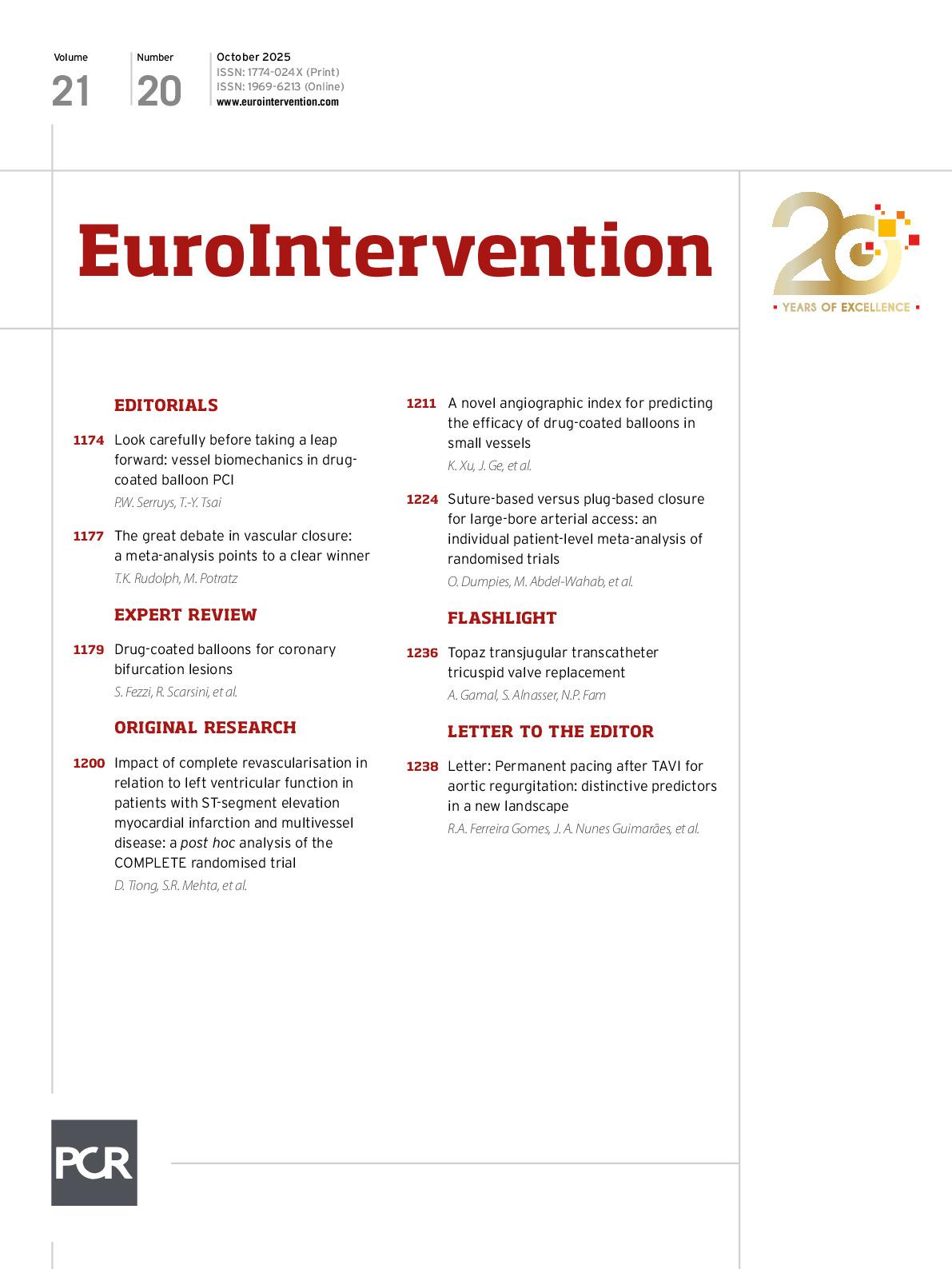Abstract
Background: Percutaneous large-bore arteriotomy closure devices are either suture- or plug-based. The comparative efficacy and safety of both techniques and optimal patient selection remain controversial.
Aims: We aimed to conduct a patient-level meta-analysis of randomised trials comparing suture-based ProGlide versus plug-based MANTA large-bore vascular closure devices (VCDs).
Methods: We searched PubMed, the Cochrane Central Register of Controlled Trials, and Google Scholar for randomised controlled trials comparing vascular closure with the ProGlide-based and the MANTA-based technique. The primary endpoint of this analysis was access site-related vascular complications defined according to the Valve Academic Research Consortium-3 criteria.
Results: We identified 2 trials that enrolled a total of 722 patients undergoing transcatheter aortic valve implantation. The primary endpoint was significantly less common after vascular closure with the ProGlide-based technique (odds ratio [OR] 0.54, 95% confidence interval [CI]: 0.35-0.82). Access site-related bleeding events were also less common with the ProGlide-based technique (OR 0.41, 95% CI: 0.18-0.94). Prespecified subgroup analyses did not reveal any subgroup favouring the plug-based technique. Clinical outcomes with the MANTA-based technique were better in larger-sized vessels. Patients who received the ProGlide-based technique were less likely to undergo endovascular stenting or vascular surgery (OR 0.22, 95% CI: 0.06-0.79).
Conclusions: In this patient-level meta-analysis of randomised trials, the ProGlide-based technique for large-bore arterial access was superior to the MANTA-based technique in terms of vascular and bleeding complications.
Sign up for free!
Join us for free and access thousands of articles from EuroIntervention, as well as presentations, videos, cases from PCRonline.com

